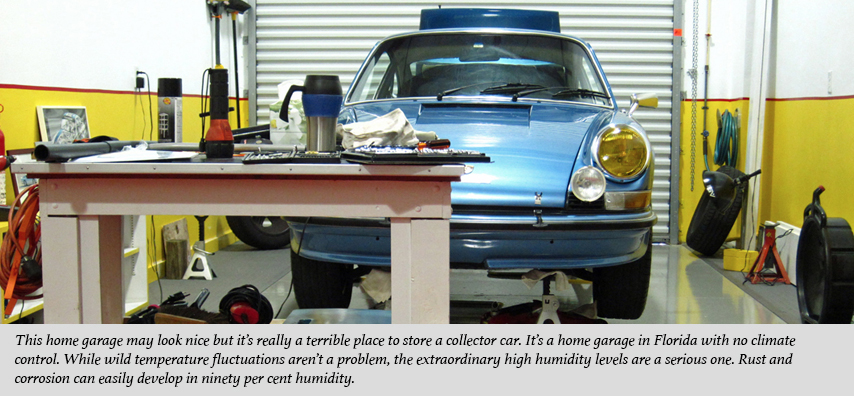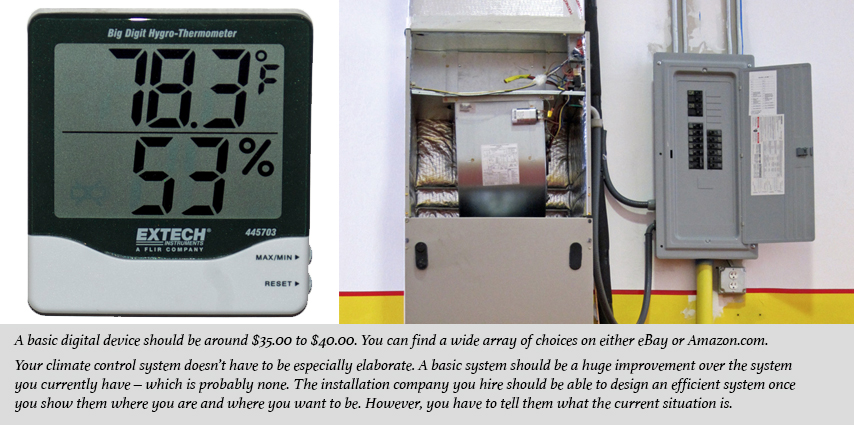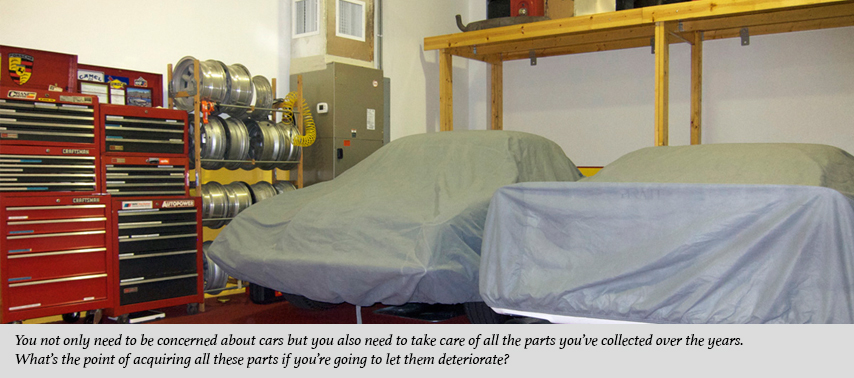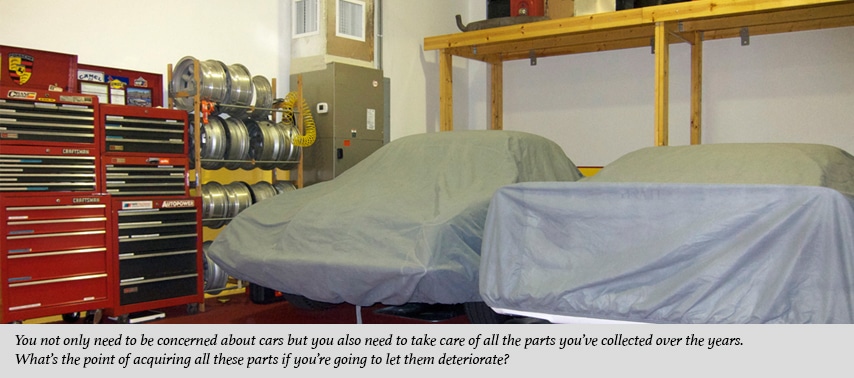Most people do more damage storing their cars than they do driving them. You need to give some serious thought as to where you store your cars. Actually you need to start thinking like someone who collects art or furniture. Here’s a great video that illustrates what’s going on in the art world:
You obviously wouldn’t store your Chippendale chairs in your home garage. Why is your collector car out there? Some of you own cars that may be more valuable than a Chippendale chair. In some cases a lot more valuable.
Before you start installing a system similar to the Christie’s system in the video you need to get an idea about how bad things are in your storage area. You need to record the humidity and temperature levels in your storage area over a period of time. At a minimum you need a reliable thermometer and humidity gauge for recording the levels over time. These instruments don’t have to be expensive but they do have to be reliable.

You can get a temperature and humidity monitor with a nice digital display on Amazon.com for around $35.00. If you want to keep a record of all of this you can get a unit that puts everything in an Excel file for a few hundred dollars. Then again what’s wrong with paper and pencil?
Stability is the most important criteria. Wild temperature fluctuations are not good for your car. Every time you open the garage door on your home garage bad things are happening to your collection. Christie’s storage areas for art are maintained at 70°F+/- 3° with 50% relative humidity +/-5%. It’s the variation that’s most critical. When you review a 30-day record for your area pay particular attention to the highs and lows.

If you live in Vermont your home garage might not be the ideal storage area. Every time you open the big garage door to work on your cars your collection is going to experience a huge change in temperature. Once in the shop area you close the door, turn on the heating system, and spend the day working on your car. At the end of the day you turn the heat off and the garage gets really cold again. All of these fluctuations are a problem.
The greater these fluctuations in temperature and humidity the faster your car collection will deteriorate. Taking this a step further, how rapidly these fluctuations occur is another problem. You need to maintain a stable climate over time. Stability is far more important then the actual temperature and humidity.

In a perfect world you should maintain stable conditions year round. In this ideal world your storage area should never get above 70°F and the humidity should always be between 40% and 50%. If possible, an even lower temperature is better for your car collection. However, relative humidity should not be allowed to get too low because you can damage the leather by drying it out. Generally you should try to keep the relative humidity no lower than 30%. Some heating systems can bring the humidity to dangerously low levels. That’s just one more reason to keep track of things.
Once you’ve monitored the situation you can make changes to bring your storage area into compliance. That’s when you call in the HVAC specialist to design a system. This specialist though needs to know what he’s working with. That’s where all of your data recordings come into play.




